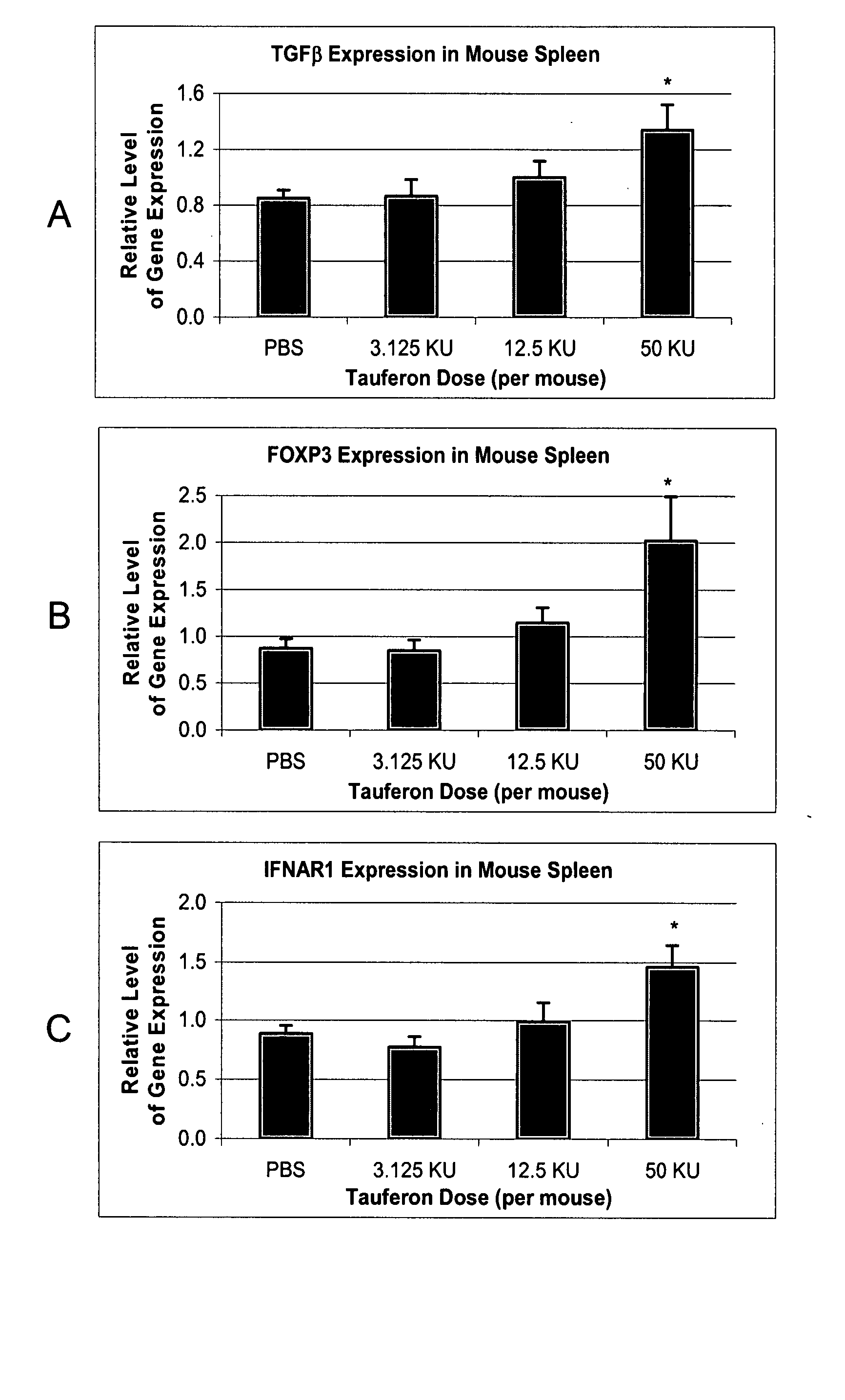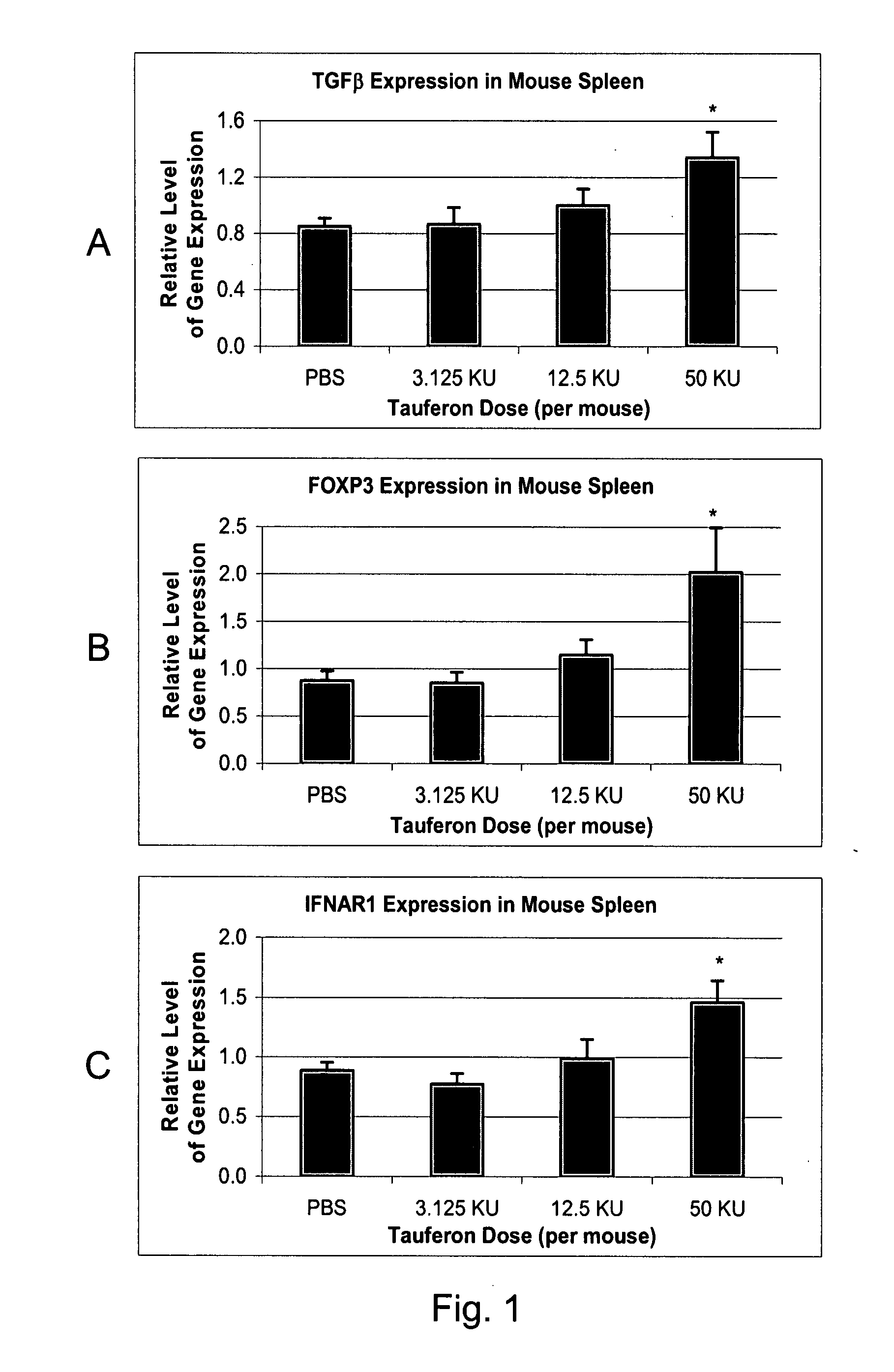Respiratory tract delivery of interferon-tau
a technology of interferon and respiratory tract, which is applied in the direction of peptide/protein ingredients, immunological disorders, metabolism disorders, etc., can solve the problems of toxicity and side effects, affecting the availability of the drug, and difficulty in providing an effective means of delivery to the body and achieving the desired biodistribution, etc., to achieve the effect of increasing stability and/or solubility
- Summary
- Abstract
- Description
- Claims
- Application Information
AI Technical Summary
Benefits of technology
Problems solved by technology
Method used
Image
Examples
example 1
[0110] A synthetic IFN-τ gene is generated using standard molecular methods. (Ausubel, et al., in CURRENT PROTOCOLS IN MOLECULAR BIOLOGY, John Wiley & Sons, Inc., Media, Pa. (1988)) by ligating oligonucleotides containing contiguous portions of a DNA sequence encoding the IFN-τ amino acid sequence. The DNA sequence used may be either SEQ ID NO:1, SEQ ID NO:2 or SEQ ID NO:3, variants thereof, or the sequence as shown in Imakawa, K. et al., Nature, 330:377-379, (1987). The resulting IFN-τ polynucleotide coding sequence may span position 16 through 531 to yield a coding sequence of 172 amino acids.
example 2
[0111] The full length synthetic gene StuI / SstI fragment (540 bp) was cloned into a modified pIN III omp-A expression vector and transformed into a competent SB221 strain of E. coli. To express the IFN-τ protein, cells carrying the expression vector were grown in L-broth containing ampicillin to an OD (550 nm) of 0.1-1, induced with IPTG (isopropyl-1-thio-β-D-galactoside) for 3 hours and harvested by centrifugation. Soluble recombinant IFN-τ was liberated from the cells by sonication or osmotic fractionation.
[0112] For expression in yeast, the IFN-τ gene was amplified using polymerase chain reaction (PCR; Mullis, K. B., U.S. Pat. No. 4,683,202, issued 28 Jul. 1987; Mullis, K. B., et al., U.S. Pat. No. 4,683,195, issued 28 Jul. 1987) with PCR primers containing StuI and SacI restriction sites at the 5′ and 3′ ends, respectively. The amplified fragments were digested with StuI and SacI and ligated into the SacII and SmaI sites of pBLUESCRIPT+(KS), generating pBSY-inteferon-tau. Plasm...
example 3
[0114] Eight New Zealand White mice are obtained and experimental allergic encephalomyelitis is induced, as described in U.S. Pat. No. 6,060,450. Four of the mice are treated with interferon-τ applied intranasally daily for one month. During the treatment period, the severity of disease was graded on the following scale: 1, loss of tail tone; 2, hind limb weakness; 3, paraparesis; 4, paraplegia; 5, moribund / death. Animals treated with intranasally applied interferon-τ have a lower score than untreated animals.
PUM
| Property | Measurement | Unit |
|---|---|---|
| size | aaaaa | aaaaa |
| particle size | aaaaa | aaaaa |
| concentration | aaaaa | aaaaa |
Abstract
Description
Claims
Application Information
 Login to View More
Login to View More - R&D
- Intellectual Property
- Life Sciences
- Materials
- Tech Scout
- Unparalleled Data Quality
- Higher Quality Content
- 60% Fewer Hallucinations
Browse by: Latest US Patents, China's latest patents, Technical Efficacy Thesaurus, Application Domain, Technology Topic, Popular Technical Reports.
© 2025 PatSnap. All rights reserved.Legal|Privacy policy|Modern Slavery Act Transparency Statement|Sitemap|About US| Contact US: help@patsnap.com


